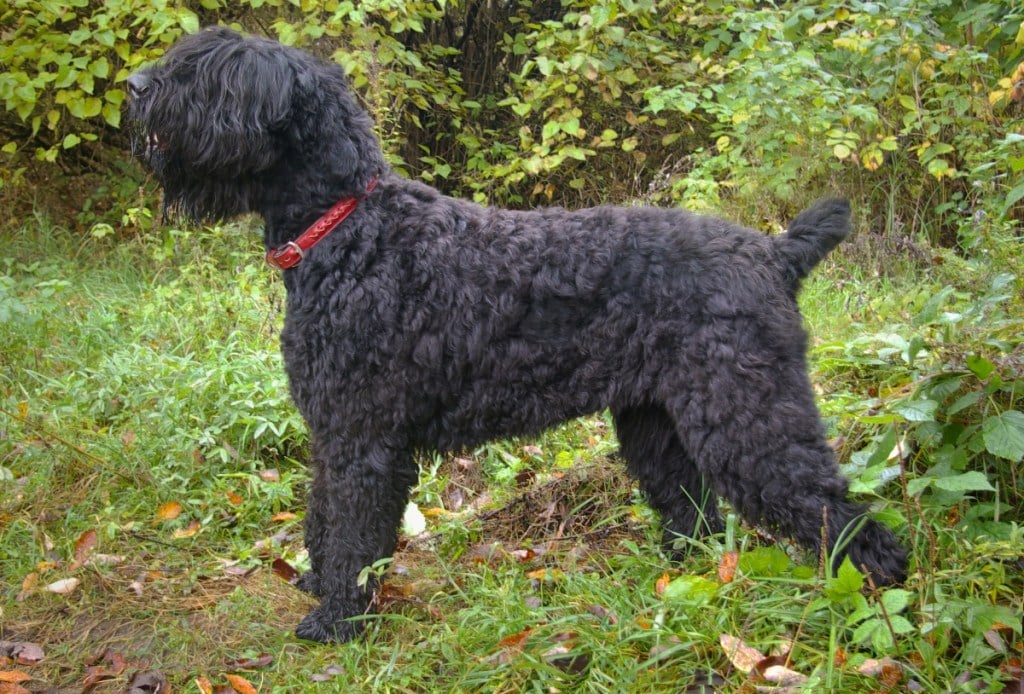Introduction to Weimaraners
The Weimaraner is a large breed of dog with German roots. It is a sleek and streamlined dog with a grayish coat and balanced demeanor. These dogs are great with kids, easy to groom, and have a fun-loving nature. However, they do require a good amount of exercise to stay mentally stimulated and physically well.
Although Weimaraners were initially used for hunting, most of these dogs live as household pets and family companions today. If you have considered purchasing or adopting a Weimaraner for your home, read on to learn more about this breed and how to take the best care of your dog’s health!
Size of Weimaraners
Male Weimaraners grow to be 25 to 27 inches tall and 70 to 90 pounds. Female Weimaraners are 23 to 25 inches tall and 55 to 75 pounds when fully grown. These dogs usually stop gaining height at 15 months of age, but they may keep gaining weight beyond this time.
Here’s how big you can expect your Weimaraner to get as the dog grows from puppyhood to adulthood:
| Weight Chart | 3 months | 6 months | 9 months | 12 months |
| Average Weimaraner Weight by Month | 21 lbs. | 48 lbs. | 68 lbs. | 74 lbs. |
Characteristics of Weimaraners
Weimaraners are excellent companion dogs that have lots of energy and love to give. They are sensitive dogs that are affectionate, playful, and moderately tolerant of different temperatures. However, these dogs need lots of activity and consistent training to thrive in a new environment. Fortunately, they are very trainable because they were originally bred as all-around hunting dogs able to handle big game, such as deer, wolves, and bears.
The Weimaraner is a dog that is best suited for experienced pet parents rather than novices. They have a strong prey drive, are independent thinkers that will push your boundaries to the limits, and are versatile dogs that can be happy in a variety of environments.
As you get to know a Weimaraner’s personality, here’s what you can expect based on his or her breed characteristics:
| Breed Characteristic | Level (High, Medium, Low) |
| Affectionate with People | High |
| Good with Kids | High |
| Good with Pets | Medium |
| Need for Exercise | High |
| Energy Level | High |
| Intelligence Level | High |
| Able to Be Trained | High |
| Amount of Barking | Low |
| Amount of Shedding | Medium |
History of Weimaraners
The history of the Weimaraner dates back to the early 1800s in Germany. A grand duke in Germany named Karl August was an avid sportsman and dreamed of developing a great hunting dog. August crossed bloodhounds with German and French hunting dogs to create the Weimaraner. He held court in the German town of Weimar, which is how the dog got its name.
For many years, the Weimaraner was an important part of the German aristocracy. The breed first began making an appearance in America in the late 1920s. Weimaraners gained popularity in the 1950s and were embraced by well-known dog lovers like President Dwight D. Eisenhower and Grace Kelly. A Weimaraner named Heidi lived in the White House with the first family when Eisenhower was president. Weimaraners have been featured in William Wegman’s artistic portraits. In 1942, the Weimaraner Club of America formed, and the American Kennel Club recognized the breed later that year. The breeding practices of Weimaraners have improved in more recent decades to ensure that the dogs are as healthy as possible from puppyhood to adulthood.
Weimaraner Standard Information
Weimaraners have a very distinctive appearance, which must be adhered to for dogs to compete at official shows and competitions. The breed standard for the Weimaraner describes the dog as having aristocratic features and being alert and graceful. The temperament of the dog is obedient, fearless, and friendly.
Here is an overview of the breed standard information for Weimaraners:
Head:
- Long and aristocratic
- Prominent occipital bone
- Long and lobular ears
- Light amber, gray, or blue-gray eyes
- Well-set, strong, and even teeth
Neck, Topline, Body:
- Clean cut and moderately long neck
- Back moderate in length and set in a straight line
- Chest well-developed and deep with shoulders well-laid back
- Well-sprung and long ribs
Forequarters:
- Straight and strong forelegs
- Feet firm and compact with webbed and well-arched toes
- Dewclaws should be removed
Hindquarters:
- Well-angled stifles and straight hocks
- Well-developed musculation
- Nails short and gray or amber
Coat:
- Smooth, short, and sleek
- Solid color
Color:
- Mouse gray to silver gray
- Small white marking on the chest is permitted
Gait:
- Effortless and smooth coordination
- Hind feet appear parallel to front feet
- Topline strong and level
Caring for Weimaraners
One of the most important things to know about caring for a Weimaraner is that they need a lot of human attention. They do well with other dogs if socialized early-on. However, they do not generally do well with cats, birds, or other small pets due to their strong prey drive.
Weimaraners are large and active dogs that need plenty of space to run around. They also do well with active pet parents who enjoy hiking and other outdoor activities. Never leave a Weimaraner alone for long periods of time or you may be faced with destructive behavior, escape attempts, or excessive barking. Make sure that your yard prevents the Weimaraner from escaping because these dogs are known to be skilled at opening doors and jumping over fences.
Here are some general tips for taking the best care of a Weimaraner:
Best Living Environments:
- Houses with sizable yards
- Not meant for backyard life or apartment living
- Active families that get outdoors frequently
- Does well in families with children
Types of Exercise:
- Running
- Playing fetch
- Hiking
- Jogging alongside a bicycle
Mental Enrichment:
- Agility training
- Hunting to satisfy the prey drive
- Plenty of time indoors with human family members
Training Strategies:
- Very trainable but also independent thinkers
- Train gently because these are sensitive dogs
- Keep your sense of humor while training a Weimaraner
Grooming Tips:
- One of the easiest dog breeds to groom
- Brush weekly with a bristle brush
- Bathe as needed when dirty
- Wipe ears weekly with a cotton ball
- Brush teeth daily
- Trim nails once or twice monthly unless worn down naturally outdoors
Common Health Problems of Weimaraners
Like all dog breeds, the Weimaraner is prone to certain health conditions because of its breeding and genetics. For example, bloat (also known as gastric dilation-volvulus) is common with this type of dog and other large breeds. Weimaraners that enjoy hunting and other outdoor adventures are more prone to injuries, such as broken bones, animal bites, and skin abrasions. The average life span of a Weimaraner is 11 to 14 years.
These are some of the most common health issues that arise with Weimaraners:
- Gastric dilatation-volvulus
- Hip dysplasia
- Kidney stones
- Von Willebrand’s disease
- Hyperuricosuria (excessive uric acid in the urine)
- Thyroid issues
- Skin allergies
- Eye diseases, such as progressive retinal atrophy
- Factor XI deficiency, a bleeding disorder
- Distichiasis (extra eyelashes that cause corneal irritation and tearing)
Many pet parents of Weimaraners have found peace of mind and significant financial savings by signing their pups up for Healthy Paws pet insurance plans. With Healthy Paws, you can get the Weimaraner the necessary care after a new injury or illness without stressing out about the high cost of veterinary treatment.
Diet and Nutrition for Weimaraners
The total amount of dry food that a fully grown Weimaraner should eat each day is about 2.5 to 3.5 cups. This breed is meant to look athletic, muscular, and lean, so feeding too much may cause your Weimaraner to gain excessive weight and lose their sleek physique. Select a dog food that is formulated specifically for large breed dogs and provides complete and balanced nutrition. Your veterinarian can help you select the food that is most appropriate for your Weimaraner.
Where to Adopt or Purchase Weimaraners
There are many rescue groups dedicated to the Weimaraner breed that you can reach out to if you are interested in adopting one of these dogs. Examples are the Atlanta Weimaraner Club Rescue, Weimaraner Club of Albuquerque, Weimaraner Rescue of Texas, and Great Lakes Weimaraner Rescue.
If you want to purchase a purebred Weimaraner, the AKC Marketplace is a good place to start. The Weimaraner Club of America offers a breeder referral resource to help you find a Weimaraner to purchase as well.
Related Breeds
If you are like many people and have fallen in love with the Weimaraner breed, you might also be interested to learn about similar and related breeds of dogs. Here are some other breeds to explore before you make a final decision to adopt or purchase a Weimaraner:
- Dalmatian
- German shorthaired pointer
- Braque Francais Pyrenean
- Vizsla
- Sussex Spaniel
Pet Insurance for Weimaraners
Are you ready to bring a lively and lovable Weimaraner into your life? Prepare yourself and your pup for whatever life brings with a Healthy Paws dog insurance plan. Please tell us a few details about your dog to get a Weimaraner insurance quote today!













